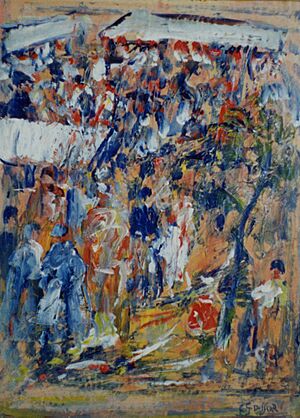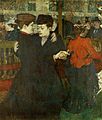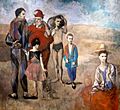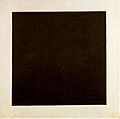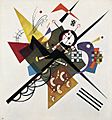Modern art facts for kids
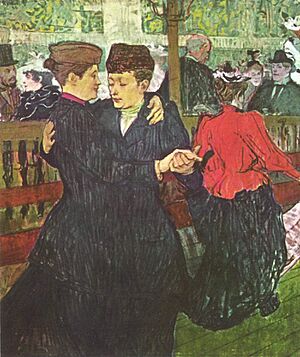
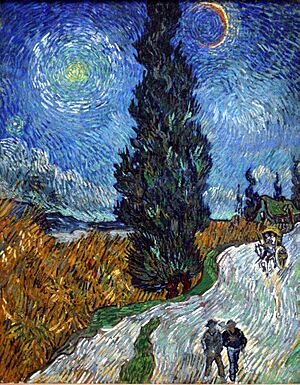
Modern art describes artworks made from around the 1860s up to the 1970s. It's about the special ways artists created and thought about art during this time. This period also saw the invention of new ways to capture images, like photography and film.
Modern art often means artists broke away from old traditions. They loved to experiment with new ways of seeing things. They also explored fresh ideas about art materials and what art could do. Many modern artworks tend to be abstract, meaning they don't always show things exactly as they look in real life. Art made after this period is usually called Contemporary art or Postmodern art.
Contents
The Story of Modern Art
Modern art really started with painters like Vincent van Gogh, Paul Cézanne, Paul Gauguin, Georges Seurat, and Henri de Toulouse-Lautrec. Their work was super important for what came next.
Early 20th Century Art
At the start of the 1900s, Henri Matisse and other young artists changed the art world in Paris. These artists included Georges Braque, André Derain, Raoul Dufy, and Maurice de Vlaminck. They painted "wild" and colorful landscapes and people. Critics called their style Fauvism, which means "wild beasts."
Henri Matisse's paintings, like his two versions of The Dance, were a big moment for him and for modern painting. These works showed his interest in primitive art. The bright, warm colors of the dancers against the cool blue-green background make you feel a sense of freedom and joy.
Cubism: A New Way to See
Pablo Picasso created his first Cubist paintings. He got the idea from Cézanne, who thought everything in nature could be broken down into simple shapes like cubes, spheres, and cones. In 1907, Picasso painted Les Demoiselles d'Avignon. This radical painting showed women in a new way, inspired by African masks and his own Cubist ideas.
Analytic Cubism was a style developed by Pablo Picasso and Georges Braque. An example is Violin and Candlestick, Paris, from 1908 to 1912. This was the first clear type of Cubism. After that came Synthetic Cubism. Artists like Braque, Picasso, Fernand Léger, Juan Gris, Albert Gleizes, and Marcel Duchamp used this style into the 1920s. Synthetic Cubism often included different textures, surfaces, and even real-world items like collage and papier collé (glued paper).
Modern Art in the United States
Modern art came to the United States in 1913. Many European artists moved there during World War I. But it was after World War II that the U.S. became a major center for new art movements. In the 1950s and 1960s, a style called Abstract Expressionism became very important. It was one of the last big modern art movements.
Art Prices
Modern art and Impressionism are very popular in the art market today. Most of the most expensive artworks ever sold are modern pieces. For example, Jackson Pollock's No. 5, 1948 sold for over $151 million. Modern paintings became more valuable than older, classical art around 1987.
Images for kids
-
Henri de Toulouse-Lautrec, At the Moulin Rouge: Two Women Waltzing, 1892
-
The Scream by Edvard Munch, 1893
-
Pablo Picasso, Family of Saltimbanques, 1905, National Gallery of Art, Washington, DC.
-
Klimt in a light Blue Smock by Egon Schiele, 1913
-
I and the Village by Marc Chagall, 1911
-
Black Square by Kasimir Malevich, 1915
-
Marcel Duchamp, Fountain, 1917. Photograph by Alfred Stieglitz
-
Wassily Kandinsky, On White II, 1923
See also
 In Spanish: Arte moderno para niños
In Spanish: Arte moderno para niños


